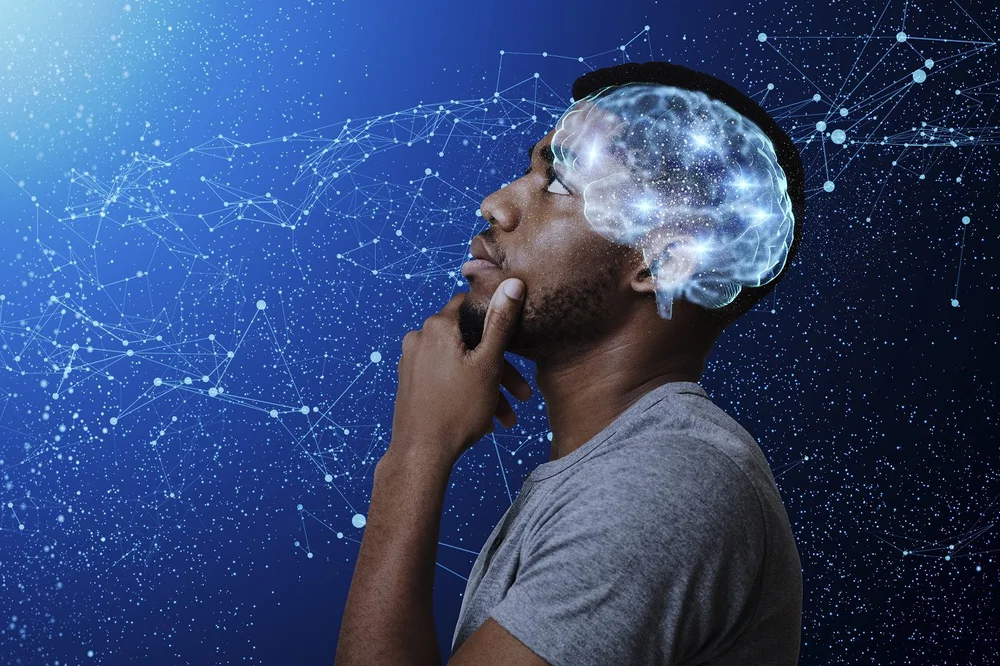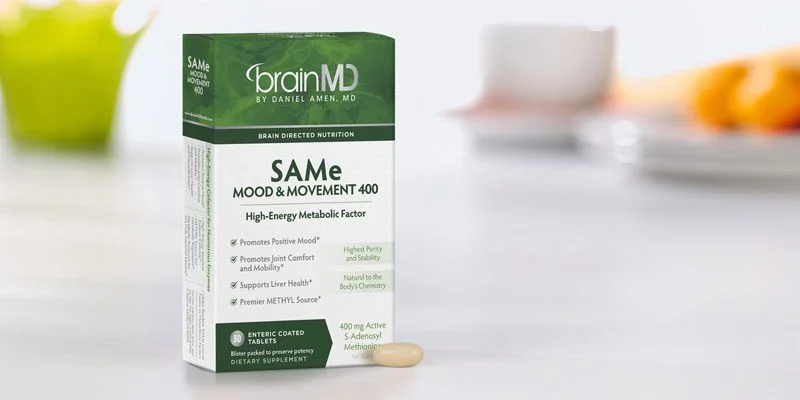Anatomy of the Brain: How Well Do You Know Your Brain?
Medically Reviewed by Dr. Parris Kidd
How well do you know your brain?
As the executive control center of the entire body – and the supervisor of every thought, mood, memory, and action – your brain makes you who you are.
Brain Basics
Even though your brain makes up only about 2 percent of your body’s weight (about three pounds), it uses at least 20 percent of the calories you consume. It’s the consistency of soft butter and is housed in a hard skull that has many sharp ridges.
A healthy brain helps improve decision-making, which can lead to better relationships, job performance, finances, physical health, and overall happiness.
Since it runs everything in your life, let’s look at some of the different areas of your brain…
Anatomy of the Brain: A Brief Tour of the Brain’s Main Regions
The largest region of the human brain is the cerebral cortex, the wrinkly walnut-shaped mass that sits atop and covers the rest of the brain. The cerebral cortex has four main areas, or lobes, on each side of the brain: frontal, temporal, parietal, and occipital.

Temporal Lobes – which are located underneath your temples and behind your eyes, are involved in language, auditory processing, learning, memory, and emotion. They also interface with zones involved with mood stability, emotional reactions, fear perception, temper control, and assist with moving memories into long-term storage.
Parietal Lobes – at the top side and back of the brain are the main centers for sensory processing (touch), perception, spatial orientation, and sense of direction.
Occipital Lobes – which are located at the back of the cortex, are concerned primarily with vision and visual processing.
In general terms, the front half integrates what the body’s senses take in. It then analyzes that information before planning and executing decisions.
The back half (the parietal and occipital lobes and the back part of the temporal lobe) perceives one’s surroundings.
As we take a closer look at the anatomy of the brain, here are some of the key zones that are housed within the four lobes:
Prefrontal Cortex
Within the frontal lobes, the prefrontal cortex is the most evolved part of the brain. It occupies the front third of the brain, behind the forehead.
It’s divided into three sections: the dorsal lateral section (on the outside surface of the PFC), the inferior orbital section, (on the front undersurface of the brain), and the anterior cingulate gyrus, (which runs through the middle of the frontal lobes).
The PFC is involved with:
- Focus
- Empathy
- Judgment, forethought
- Organization, planning
- Impulse control
- Learning from mistakes
Our ability as a species to think, plan, use time wisely, and communicate with others is heavily influenced by this part of the brain. The PFC is responsible for helping you be goal-oriented, socially responsible, and productive in every area of your life. The PFC continues to develop beyond puberty into late adolescence and even into the mid-20’s.
The brain systems that drive you to seek out things that bring you pleasure and the PFC, which puts on the brakes when you’re about to engage in risky behavior, work in concert to create your self-control circuit.
In a healthy self-control circuit, an effective PFC provides impulse control and good judgment while the deep limbic system offers an adequate dose of motivation so you can plan and follow through with your goals. This allows you to say no to alcohol, hot fudge sundaes, cigarettes, gambling, and many other bad behaviors. But what happens when the PFC isn’t working well?
Problems in the PFC
Think of the PFC as your boss at work. The evidence suggests that when the PFC is low in activity, it’s as if the boss is gone, so there’s little to no supervision and nothing gets done. On the other end of the spectrum, when the PFC works too hard, it’s as if the boss is micromanaging everyone and people are left with anxiety and worry.
Decreased activity in the PFC has been associated with lack of forethought, poor judgment, impulse control problems, and poor internal supervision. It may be that when the PFC is underactive, it can create an imbalance in the reward system and cause you to lose control over your behavior. When this happens, you’re more likely to fall victim to your cravings.
Prefrontal Cortex Tip: Keep your blood glucose balanced throughout the day with healthy snacks. Also, supplementing with standardized herbal extracts of green tea, ginkgo biloba, and Maritime Pine bark (Pycnogenol®) promote blood flow to the brain, which can help you make better decisions. Low blood sugar and blood flow are associated with poor impulse control, irritability, and bad decisions.
Anterior Cingulate Gyrus
Within the brain’s frontal lobes is an area called the anterior cingulate gyrus (ACG). The ACG is involved with attention, and when this part of the brain works normally, it allows us to move from one thought to the next.
This has led some to refer to the ACG as the brain’s “gear shifter.” However, when the ACG is overactive, people tend to get stuck on negative thoughts or behaviors.
This may include anxiety-provoking and depressive thoughts. When an overactive ACG is combined with excessive basal ganglia activity, people can get stuck on anxious thoughts. Also, when an overactive ACG is combined with too much activity in the deep limbic system, people can get stuck on negative or depressive thoughts.
When ACG overactivity becomes worse with concentration, it usually means that as the person tried to focus on something, they become more anxious or more stuck on negative thoughts or behaviors. Many times, the harder they concentrate, the worse the problem becomes.
Problems in the ACG
People with ACG issues have difficulty shifting attention can get stuck in harmful behaviors, such as:
- Getting stuck on thoughts (obsessions)
- Getting stuck on behaviors (compulsions)
- Oppositional behavior
- Argumentativeness, uncooperativeness, tendency to say no
- Worrying
- Addictive behaviors (alcohol or drug abuse, eating disorders)
- Cognitive inflexibility
- Holding on to past hurts
- Road rage
Anterior Cingulate Gyrus Tip: The nutrients 5-HTP, tryptophan, and vitamin B6 promote healthy serotonin activity to help the ACG work at its best.
Basal Ganglia
This set of large structures toward the center of the brain surround the limbic system. They’re involved with integrating feelings, thoughts, and movement, which is why we jump when we get excited or freeze when we become scared.
The basal ganglia (BG) help to modulate motivation and are involved with feelings of pleasure and ecstasy (which is why drugs like cocaine and methamphetamines are believed to have strong effects on this part of the brain). Among other functions, the BG are involved in forming habits, but overactivity in this area of the brain is associated with increased anxiousness.
When the BG are overactive, people tend to struggle with uncertainty and avoid conflict. With increased activity, there can be repetitive behaviors (such as tics, nail-biting, and teeth grinding), and compulsions (such as excessive hand washing and checking locks).
Basal Ganglia Tip: Supplements that may help with anxiousness include the calming neurotransmitter GABA; magnesium and l-theanine, which reinforce GABA; the B vitamins, especially vitamin B6; and certain standardized extracts of the herbals ashwagandha and saffron.
Limbic System
This highly influential, walnut-sized area is situated deep in the center of your brain. The limbic system (LS) influences problem solving, organization, and rational thought.
From an evolutionary standpoint, the limbic brain is an “older” part of the brain, enabling humans to experience and express emotions, freeing them from primitive behaviors, and helping to develop the surrounding cerebral cortex.
What is the LS?
- Thalamus is a large structure deep in the center of the brain that relays info to and from the outside world and your cerebral cortex
- Amygdala is an almond-shaped structure in the temporal lobes involved in emotions and fear responses
- Hippocampus is a seahorse-shaped structure that helps memories move into long-term storage
- Hypothalamus is the size of a pearl and controls brain chemicals that make you hungry, sleepy, exhilarated, angry, or unhappy
- Olfactory cortex is our sense of smell, which connects to emotional and memory centers
When the LS is overactive, you’re likely to interpret neutral events through a negative filter. On the other hand, when this part of the brain is balanced, a positive interpretation of events is more likely to occur.
Appetite and Sleep
Your sleep and appetite cycles are controlled by the LS, especially the hypothalamus. Disruptions in the LS can negatively affect sleep and appetite, which may mean an inclination toward too much or too little of either.
LS structures are also intimately involved with bonding and social connectedness. We’re social animals; when we’re bonded to people in a positive way, we tend to feel better about ourselves and our lives.
Limbic System Tip: Supplements that provide the nutrients omega-3 fatty acids (especially those containing a higher EPA content over DHA) and SAMe (S-adenosylmethionine) have been shown to support a healthier, happier mood. SAMe isn’t recommended for those who tend to get overexcited.
Hippocampus
The term hippocampus originates from the Greek word hippokampos (hippo meaning “horse” and kampos meaning “sea monster”) as the shape of the hippocampus resembles that of a seahorse.
About 1.5 to 2 inches in length, the hippocampus is embedded deep within the temporal lobe of your brain. It plays a vital role in regulating learning, memory encoding, memory consolidation, and spatial navigation.
In basic terms, the hippocampus is where your short-term memories and new learning are turned into long-term memories that are then stored elsewhere in the brain. The hippocampus helps us process and retrieve two kinds of memory: declarative memories and spatial relationships.
Declarative memories are both episodic (memories created from things you experience personally) and semantic (facts and information). Spatial relationship memories involve pathways or routes. Neurons in the hippocampus encode information about your environment in such a way that they create a mind map of your surroundings.
The hippocampus is a powerful yet sensitive part of the brain, making it susceptible to damage. Several health conditions and lifestyle choices can adversely affect your hippocampus, and, therefore, your memory function. These include:
- Aging
- Stress
- Lack of physical exercise
- High or low blood sugar
- Poor blood circulation
- Nutrient deficiencies
- Habitual alcohol intake
- Low mood
- Weight issues
- Sleep problems
- Marijuana use and other “lifestyle” drugs
- Head injury
Hippocampus Tip: One major diet recommendation to support this area of the brain is omega-3-rich cold-water fish. Omega-3 EPA and DHA are crucial for learning and memory. Plant omega-3s are poorly utilized. Vegetarians and vegans are advised to use algae supplements that supply preformed EPA and DHA.
Cerebellum
The cerebellum, Latin for “little brain,” is also an older part of the brain. It’s located behind the brainstem at the base of the brain and helps control physical coordination, as well as the precision of movement and timing. The cerebellum may also be involved with higher-level thinking, including attention, learning, working memory, processing speed, language, judgment, physical movement and thought coordination – the ability to integrate new information.
The left side of the cerebellum plays a role with right-hemisphere tasks in the brain, such as seeing the big picture and reading social cues, while the right cerebellum assists with left-hemisphere tasks, such as language. Damage to one side of the frontal or temporal lobes tends to turn off the cerebellum on the opposite side, a condition called crossed cerebellar diaschisis.
Cerebellum Tip: Coordination exercises, such as dance, tennis, table tennis, and tai chi, can strengthen this part of the brain.
Protect Your Brain
Hopefully this brief overview of the anatomy of the brain has given you a deeper understanding and appreciation for your brain.
Your brain makes you you, so do everything you can to nurture and protect it.
At BrainMD, we’re dedicated to providing the highest purity nutrients to improve your physical health and overall well-being. For more information about our full list of brain healthy supplements, please visit us at BrainMD.




Nice article. The drawing spells the “prietal” lobe incorrectly. Hope you have that corrected and update your photo. Missinformation is a great source of confusion.
M.
Great catch on the spelling error in the image. We will have the image replaced. Thanks for keeping an “eagle eye” out for us.
BrainMD Team
Your diagram has misspelled the Parietal Lobe as “Pariental Lobe” so I am sure that you will want to correct this! This is not the first error that I have commented on so I think that you folks need an educated editor.
Deanne,
Thanks for catching the spelling error in the image. We will have it replaced.
BrainMD Team
So very interesting. Just had an MRI AND EEG to hopefully determine why I’m hearing organ music 24/7 since July, 21. Both tests returned normal, which in turn prompted my curiosity to read this article. I’m grateful for the information, however as I’ve taken supplements since age 25, I doubt if something that simple could help my situation. I’m at a loss, and quite disappointed and discouraged. At age 86 I am somewhat forgetful, living in assisted housing, but nevertheless, functioning independently these past 4 years. Appreciated the this lesson on our brains,however, also happy I won’t be asked to take an exam. WOW. Lots to remember❤️. Peace